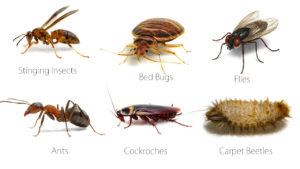06 Jan Pest Allergy
Pests like cockroaches and rodents may trigger asthma, rhinitis and eczema in allergic individuals and will be attracted to homes that are warm, have access to water, food and shelter. In addition, pests can carry disease causing germs, so their presence in a home, warrants action. A single cockroach can produce 1500 Units of allergen per day, and just two or three cockroaches can trigger asthma and allergies. Rodents (mice and rats) can mate when they are just one month old, and they leave a trail of urine wherever they go which contains a protein that can trigger allergic reactions.
Up to 40% of asthmatics will be sensitive to cockroach allergen.
Testing
Testing the home for pests like cockroaches and rodents is a waste of time and money as the allergen is likely to be present if you have seen a rodent or cockroach lately.
Solutions
- Don’t leave food (including pet food) and water around the home
- Eliminate clutter around the home as they will use it for shelter
- Don’t let them in. Use a torch to inspect the crawl space and perimeter of your home, and caulk and seal cracks and holes
- Clean infested areas with a microfiber mop soaked in a bucket of hot water to which you have added a squirt of dishwashing liquid
- Strategically place sticky traps around affected areas to attract cockroaches
- Use baited traps to attract rodents
- Mimic nature (cats kill rodents; frogs eat insects; spiders eat insects…)
- Avoid using chemicals to kills pests and implement an integrated pest management program (www.beyondpesticides.org or www.stoppests.org)
Want to learn more?
- Step 1: Read Chapter 2: Allergens in the Healthy Home Healthy Family book
- Step 2: Enrol in the Healthy Home course
- Step 3: Consider a career as a Building Biologist
